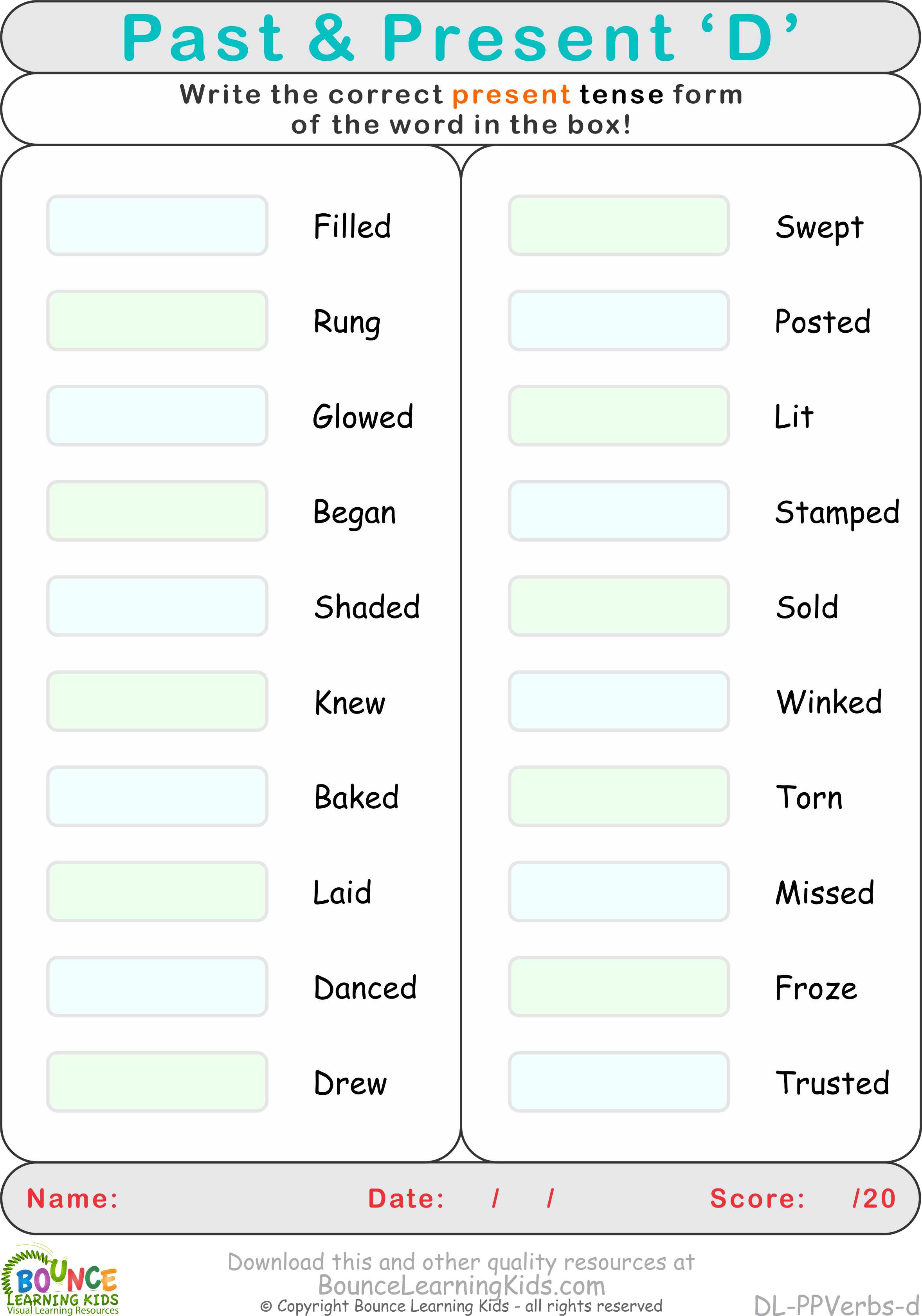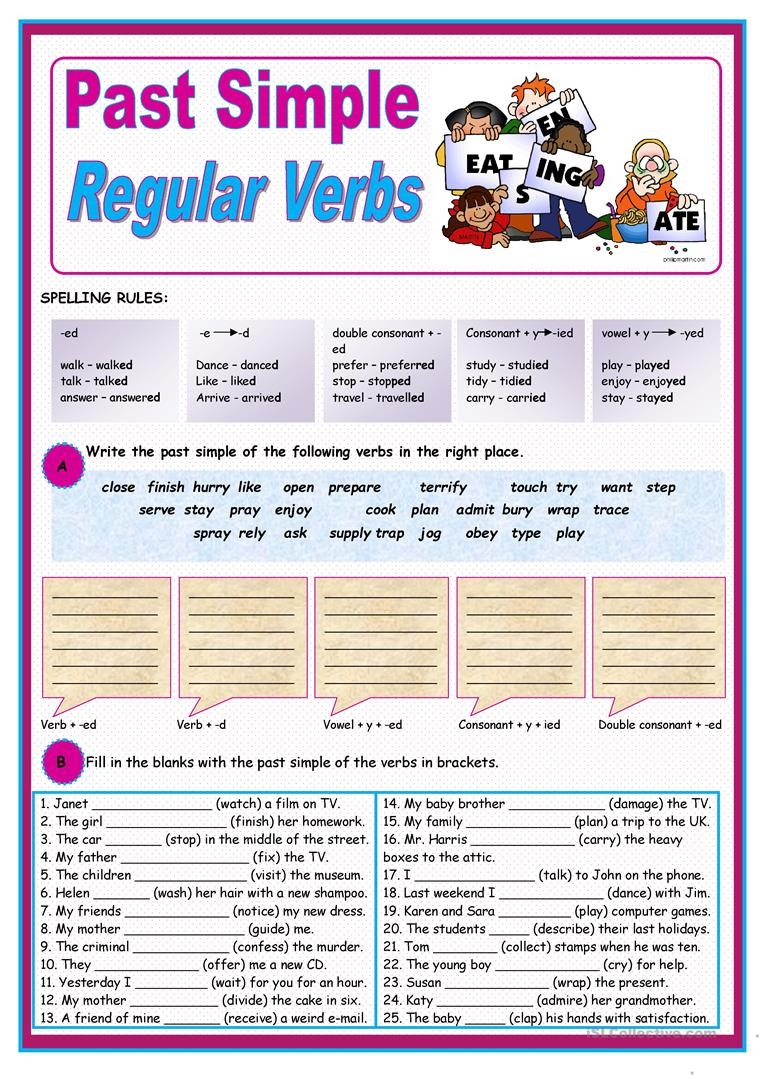
Irregular Verbs and the practice pages mentioned there. Is in remembering the many irregular verbs.

Simple past tense in English is not difficult to learn. With these minor complications of spelling and pronunciation, the

Did you work with her there? No, I didn’t start working there until 2014. Mary worked at Washington High School from 2006 to 2011.Did Sue finish hers? No, she didn’t finish it in time. Jim finished his essay at the last minute.They usually use ‘did’ (the past tense of the verb ‘to do’) or another helping verb like ‘could’ (past tense of ‘can.’) As in the present, the main verb will be in its base form, not its past form. Negatives and questions are formed the same way in the simple past as in the present. So we pronounce such words need-ed, want-ed, pro-vid-ed.Įnding sound pronounced ‘d’: believed, called, cared, loved, seemed, tried, turned, used.Įnding sound pronounced ‘t’: asked, brushed, coughed, fixed, guessed, helped, looked, talked, watched, worked.Įnd with a ‘d’ or ‘t’ sound:- add another syllable (sound of ‘id’) : acted, ended, hated, needed, provided, rotted, started, wanted.įor more on the relationship between spelling and pronunciation of these words, see English Vowels. ‘t’ sound we DO add an extra syllable (pronounced ‘id.’) Otherwise, we could not hear the difference between the past and the ‘p,’ ‘s’, ‘sh’, or ‘x.’ As a native English speaker, I never even noticed that I was ending those words with a 't' sound. It will automatically sound like ‘t’ after an unvoiced ‘ch,’ ‘f,’ ‘k,’ If you try to make a ‘d’ sound in the same syllable (It's not possible to pronounce a pure 'd' sound in the same syllable.) So with unvoicedĮndings. Pronounce a pure ‘d’ after an unvoiced ending sound, such as in ‘cook’ or ‘hope,’ you will add a syllable : cook-ed or hope-ed. Vowel or voiced consonant sound, like play or call. It’s easy to add a ‘d’ sound after a verb ending with a We do not normally add an extra syllable when we change a verb to the So the rule is: If you have a verb ending with a single vowel and then a single consonant, double the consonant before adding ‘ed’ for a regular past tense verb. That shows the difference between the two similar words.

By doubling the ending consonant of verbs like these when we add Vowel to be “short.” If we just added ‘ed’ to them, they would look just Second group of verbs end in a vowel and one consonant, causing that These pasts could easily be confused with the past tense forms of: hop, mop, plan, pin, rob, or tap. robe (to put a robe on someone) becomes robed, and.plane (smoothing wood with a tool called a plane) becomes planed,.Pronounced with a long vowel in the past. So verbs that end in a silent ‘e’ will add a ‘d’ and still be (This is NOT true for many irregular pasts!) For most regular verbs we keep the same vowed sound in the past Is one more common spelling change from the present to the regular ‘Carry’ becomes ‘carried,’ ‘cry’ and ‘try’ become ‘cried’ and ‘tried.’ (same sound) before adding the ‘ed.’ So ‘study’ becomes ‘studied.’ If a verb ends in a consonant and then ‘y’, the ‘y’ changes to ‘i’ Irregular Past Tense Verbs Spelling Changes in the Simple Past Tense.If the verb ends with a consonant, ‘ed’ is added.



 0 kommentar(er)
0 kommentar(er)
